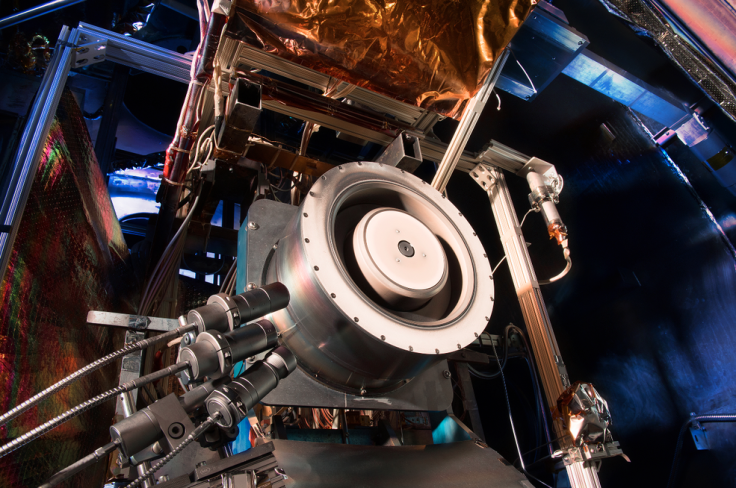Nasa and Aerojet develop experimental solar electric propulsion ion engines to transport us to Mars

Nasa has awarded $67m (£47m) to Aerojet Rocketdyne to develop futuristic ion engines that use experimental solar-electric propulsion (SEP) to power spacecraft in order to make it possible for people and large quantities of luggage and supplies to be ferried between Earth and Mars.
It is still very expensive to launch and ship cargo into space, and just to launch 1kg of cargo costs $10,000 into low Earth orbit, and $100,000 to launch it to the Moon. At the moment, the amount of stuff that would need to be shipped to Mars means it is presently impossible to colonise the Red Planet.
In order to make any mission to Mars possible, Nasa requires a much more efficient spacecraft engine, and it has now determined how exactly this will be done, awarding a 36-month contract to Aerojet to produce the engine.
How solar-electric propulsion works
Ion propulsion technology is a steadily growing field and the technology is already being used on the Nasa Dawn spacecraft's engines. The spacecraft's solar panels harness electricity from the sun and the gathered electrons are trapped in a magnetic field and then used to ionise xenon atoms.
The magnetic field also generates an electric field and charges it up to 1,000 volts so that it can shoot the ions out of the back of the spacecraft at up to 90,000 miles per hour, creating a cloud of plasma that moves the spacecraft forward.
Dawn's engines have 2.6kW thrusters, but Aerojet plans to make its ion engines have 13kW thrusters. If the method works, this would become a more efficient way to explore deep space as ion propulsion is far more fuel-efficient than chemical-driven spacecraft.
Ion propulsion has a lower thrust than chemical propulsion, but because it is more fuel-efficient and continuously accelerates the spacecraft, a lot less fuel will have to be carried for the journey.
With less fuel taking up weight, this means that the spacecraft can carry much more cargo, so essentially the new ion engine would be like the van that follows with the luggage and furniture behind your car when you move house, taking up to 36 months to get to Mars, while the chemical-driven spacecraft takes just eight or nine months to reach the Red Planet.
60 years of research
Nasa has been working on solar-electric propulsion technology since the 1950s at the Glenn Research Center in Cleveland, Ohio (formerly the Lewis Research Center), and once the engine prototypes are ready, the space agency plans to test them in the 2020s by having the spacecraft fly to an asteroid, have a vehicle grab a boulder off the asteroid and then bring it back into lunar orbit for scientists to analyse in 2026.
Since the ion propulsion is much slower, in order to save space on a spacecraft, it is likely that the technology will be used in conjunction with chemical propulsion to propel humans to Mars.
It will also be used to improve research missions to Mars – so a spacecraft could travel into Mars, orbit the planet, and then a vehicle could be sent out from the spacecraft using ion propulsion to collect samples from the planet's surface and then return to the spacecraft.
While the jury might still be out on whether other space propulsion technologies like the controversial microwave thruster technology EmDrive actually work, Nasa is excited that ion propulsion offers capacities that are over two times better than what missions have today.
© Copyright IBTimes 2025. All rights reserved.






















